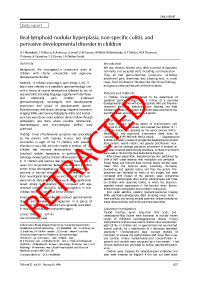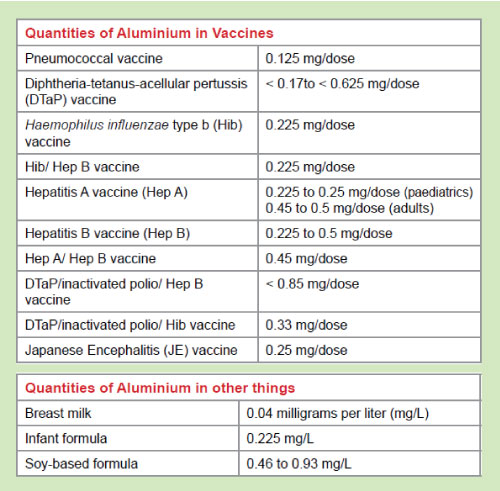Most myths and misconceptions about vaccination revolve around research that has either been disproved or based on loosely held findings. However, the bulk of it is speculatively-driven and theoretical at best. Parents therefore should consider all aspects of immunization which includes benefits, side-effects, etc. as well as arguments made against it before they determine on whether to allow or deny their child one of modern medicine’s greatest innovations. Here are some popular myths and misconceptions most echoed throughout the community:
The most prevailing myth of all is that of ‘vaccines cause autism’. The history of this claim dates back to an article published in the Lancet by one, Dr Andrew Jeremy Wakefield and his colleagues in 1998. In his paper – which has been retracted – Dr Wakefield claimed that the Measles, Mumps and Rubella (MMR) vaccine perpetrated autism in children who were vaccinated in his study. That, along with mediahype, exaggeration, and misinformation helped to create the myth we now know today. Dr Wakefield’s research has been extensively rebuked, rebutted and censured by the scientific community which, through facts and comprehensive studies, are now and always have been largely pro-vaccination. If Dr Wakefield’s claim is adopted as the sole scientific research by which antivaccine activist base their arguments, surely, they should have enough sense and logic to consider similar, more scrupulous and current studies that disproves Wakefield’s findings.

To be more specific, thimerosol – an organic compound containing mercury is used in vaccines as preservatives. Even though there is no direct evidence to support claims of its link to autism, thimerosal has been removed from or reduced to trace amounts in all vaccines routinely recommended for children 6 years of age and younger. Furthermore, the mercury found in thimerosol is ethylmercury which clears out quite quickly from the blood and has not been known to cause or be associated with any adverse effects.
Aluminium salts on the other hand, is added into some vaccines to function as an adjuvant which helps enhance immune response. Aluminium compound in vaccines (i.e. hepatitis B and Hib vaccine) has demonstrated a safety profile of over six decades of use. In addition, only trace amounts (0.17 – 0.85 mg) of aluminium are introduced per injection, according to the WHO, children consume almost the same trace amounts (0.7 mg) per day!
Products such as infant formula, processed dairy products and flour may have even higher amounts if they contain aluminium-based food additives.

Formaldehyde has a long history of safe use in the manufacture of certain viral and bacterial vaccines. It is used to inactivate viruses in vaccines and our bodies produce them naturally to help in normal bodily functions. Studies have shown that for a newborn of an average weight of 6 – 8 pounds, the amount of formaldehyde in their body is 50-70 times higher than the upper limit that they would receive from a single dose of a vaccine or from vaccines administered over time. Because the body does not differentiate the origin of formaldehyde during its break down, trace amounts of it injected into the body would not cause nor was it ever linked to adverse cancerous effects.
Vaccines are basically a dead or weakened version of a bacteria or virus. But they do not cause the disease or put the immunized person at risk of its potential complications, even it does, cases are very rare and remote. In contrast, the price paid for getting immunity through natural infection might be mental retardation from Haemophilus influenzae type b (Hib), birth defects from rubella, liver cancer from hepatitis B virus, or death from measles.
If we follow the National Immunisation Program (NIP), before your child reaches 2 years of age, he or she would have already been vaccinated about 16 times. This means their body has already been introduced to more than 10 different types of germs. Seems a bit much? Not really, children fight off 2 to 3 thousand pathogens every day just by playing, eating, and breathing alone! If you are worried about the number of shots your child takes, consider asking your paediatrician about the possibility of combination vaccines – it lessens the amount of shots but still provides protection against the same number of diseases.
No reported cases, does not mean that a particular germ no longer exists or has died off. Refusal or failure to be immunized may give rise to outbreaks, such as it happened in 2011 where 83.1% of the children in Sabah who contracted measles were not vaccinated and in Selangor 24% never took their scheduled MMR injection. More recently, in war-torn Iraq, polio has been resurgent and 2 cases have been reported since it was last seen in 2000 while neighbouring Syria recorded an outbreak just last year (2013). This is proof that infectious diseases especially those more susceptible towards children, even those thought to no longer exist, can still occur due to risk of cross-border transmission and lack of widespread immunization initiatives and awareness.
Furthermore, surveillance of adverse effects of vaccines is conducted continuously and is spear-headed by publically-trusted, expertdriven watchdogs such as the Vaccine Adverse Reporting System (VAERS) and the World Health Organization’s (WHO) newly established Adverse Events Following Immunization (AEFI) initiative which debuted in 2011 with already more than 106 participating member states.
Similarly, on top of an international database, some countries have their own vaccine monitoring system often managed by their local health authorities, in Malaysia the Ministry of Health (MoH) is the prevailing authority for such along with the help of other prominent health organisations.
There are many other misconceptions being published online in blogs, uploaded on websites and disseminated via social media, much of it cannot be validated and is quite provocative. Therefore parents should make informed decisions, it must be cultivated not only using your most powerful sense of enthusiasm as loving and caring parents, but also scepticism, critical faculties and credibility. You should always consult and visit your paediatrician if you have any questions or concerns about your child’s vaccination/ immunisation.
An educational contribution by with Malaysian Paediatric Association.





Comments